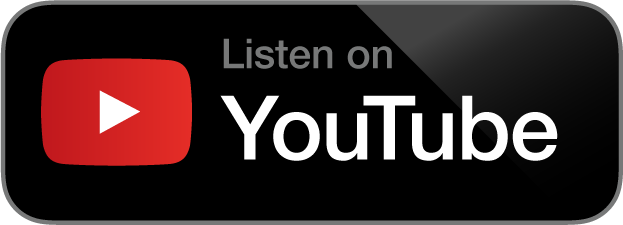Explainer Episode 35 – Why Was the CDC’s Travel Mask Mandate Struck Down?

On April 18, Judge Kathryn Kimball Mizelle of the United States District Court for the Middle District of Florida vacated the Centers for Disease Control’s mask mandate for public transportation.
Health law and policy expert Joel Zinberg joined the podcast to break down the ruling and examine the strategy behind the Department of Justice’s decision to appeal it without requesting a stay.
Transcript
Although this transcript is largely accurate, in some cases it could be incomplete or inaccurate due to inaudible passages or transcription errors.
[Music and Narration]
Introduction: Welcome to the Regulatory Transparency Project’s Fourth Branch podcast series. All expressions of opinion are those of the speaker.
Jack Derwin: Welcome to the Regulatory Transparency Project’s Explainer podcast, part of RTP’s Fourth Branch podcast series. My name is Jack Derwin, and I’m Assistant Director of RTP at The Federalist Society. Today, I’m very glad to be joined by Joel Zinberg to discuss the recent federal district court ruling that vacated the CDC’s mask mandate for air travel and public transit.
Joel is a Senior Fellow at the Competitive Enterprise Institute, and the Director of Paragon Health Institute’s Public Health and American Well-Being Initiative. Previously, Joel served as General Counsel and Senior Economist at the Council of Economic Advisors in the Executive Office of the President, where he specialized in health policy. Additionally, Joel practiced general and oncologic surgery for nearly 30 years in New York, and remains an Associate Clinical Professor of Surgery. Joel, it’s so great to have you with us today.
Joel Zinberg: It’s great to be with you. My pleasure.
Jack Derwin: Great. So let’s get right into it. To start us off, can you lay out the basics of this case?
Joel Zinberg: So this is a case that was dealing with what’s generally called the “transportation mask mandate.” And this was a policy that was promoted by the Biden administration. And, in fact, it really has its origins back in October of 2020 when then-candidate Biden had promised that he would impose a transportation mandate if elected, because the Trump administration had thus far refused to do so. And, true to his word, one day after inauguration, on January 21, he issued an executive order directing agency heads to require masks, in compliance with CDC guidelines, on public transportation and at transportation hubs.
And, within two weeks, the CDC had issued those guidelines, requiring masking on all these public conveyances and at transportation hubs. They modified those guidelines somewhat, over time, and they’ve renewed the guidelines and the mandate on several occasions. And the last time they did that was on April 13, because the mandate had been scheduled to expire on the 18th, and on the 13th, they decided to extend it to May 3.
So the case that we’re discussing really has its origins back in July of last year, when a non-profit called the Health Freedom Defense Fund, and two individuals who claimed that masks and mask-wearing exacerbated their anxiety disorders, brought suit, claiming that the mandate was illegal and should be struck down. And there was extensive back and forth and briefing.
And just this past week, on Monday, April 18, which, not coincidentally, was the original date the mask mandate was meant to expire, Judge Kathryn Kimball Mizelle, who is a district court judge in Florida, ruled that the CDC had its statutory authority, the CDC had violated the notice-and-comment procedure required for rulemaking under the Administrative Procedure Act by improperly invoking the good cause exception, and, finally, that the CDC had acted in an arbitrary and capricious manner. And she ended up vacating the mandate, which has a result of staying the mandate, blocking the mandate nationwide.
Jack Derwin: Interesting. Thank you for that. Can you dive into the reasoning in the room a little bit more, and maybe explain the background in administrative law that it fits into?
Joel Zinberg: Sure, sure. So the CDC claimed that it had authority under Section 264 of the Public Health Service Act, and that’s codified at 42 U.S.C. 264. And they were looking particularly at Section (a), which empowers it to issue regulations to prevent the introduction, transmission, or spread of communicable diseases from foreign countries and from state to state.
It’s a very similar situation to what happened last year, when the agency relied on the same section, 42 U.S.C. 264(a), to issue a nationwide eviction moratorium. And, in that instance, the Supreme Court struck down the moratorium on the grounds that the CDC had exceeded its statutory authority, since, while the language is somewhat broad, there is a second sentence in that section of the statute that narrows the types of measures that the agency can implement to limit the spread of disease. And they were looking specifically at language that talked about fumigation, disinfection, sanitation, and pest extermination.
So Judge Mizelle, in this case, followed the same reasoning to conclude that Section 264(a) doesn’t authorize the CDC to issue a mask mandate. So, as in the eviction moratorium case, this district court here invoked what’s called the major questions doctrine, which requires Congress to speak clearly in the statutory language if it intends to authorize an administrative agency to make decisions, and here is the phrase, “vast economic and political significance,” which clearly was the case in the eviction moratorium and, I think, the case here in the mask mandate.
So the CDC, I think, learned a little bit from that earlier experience. And they made reference to a specific power that the statute gave them, the power to provide for sanitation. And they also used the words “other measures” to give it, basically, broad, and almost unlimited powers to take actions applying to both sick and healthy people that would limit the spread of disease and preserve the public health. But the statutory language is really not that clear.
Now, arguably, this was a much closer question than it was in the eviction moratorium case. I think most people can agree that it was unlikely Congress intended to give the CDC power to regulate real estate transactions nationwide, and that there’s very little in the statute that allows that. Here, it’s a little closer, simply because it’s clear that the Congress was concerned with limiting infectious disease. But what Judge Mizelle focused on was what were the types of actions in 264(a) that the Congress had written into the statute.
They were talking about fumigation, disinfection, sanitation, and that these were all things that were taken on animals or articles that were found to be infected or contaminated. And the language in the statute is “Be so infected or contaminated as to be sources of dangerous infections to human beings.” So she was saying that 264(a) was focused on actions that the agency could take on property, on articles, on animals, not actions that they would take on human beings. And even though the CDC had claimed that the mandate was a sanitation measure allowed by the statute, the court held that the mandate had really nothing to do with sanitation as it’s commonly understood, which would be cleaning or sanitizing.
So there are other subsections within that 264 section which do apply to people who are travelling into the country or between the states. And in those sections, the agency is limited to taking actions on people who are reasonably believed to be infected. But the mandate here really applied to all travelers, regardless of their origins and destinations. And it made no attempt to distinguish between those who were infected and those who were not. So even though the government didn’t particularly rely on those other sections, it’s clear in the statute that when they’re talking about actions taken against human beings, they really were focused on people who were infected or coming from areas that had high levels of infection.
So that was the first plank, that they’d exceeded their statutory authority. The second issue she ruled on was that the CDC had violated the APA by improperly invoking the good cause exception to circumvent normal notice-and-comment rulemaking. And the exception applies when an agency finds that this normal notice requirement and then the 30-day comment period that allows public participation would be, and here’s the language, “Impractical, unnecessary, or contrary to the public interest.”
And the CDC had claimed that, because of the ongoing public health emergency, it would be impractical and contrary to public health to delay issuing a mandate. And, basically, that’s all the agency said, that single sentence. And the Court said that that single conclusory statement was inadequate to document the good cause needed for the exception to normal rulemaking. And the Court noted that in other instances where agencies had invoked the good-cause exception for both health- and non-health-related rules, agencies have provided detailed and careful and lengthy explanations of their reasoning.
Moreover, these claims of urgency didn’t particularly hold up, since the CDC was issuing this mandate more than a year after the pandemic started and the public health emergency had been declared. And they were doing it at a time when COVID-19 cases were declining. So that’s the second thing.
Then, finally, the third thing that the Court ruled on, this acting in an arbitrary or capricious manner, was basically because she felt that the CDC had failed to adequately explain reasoning. And, basically, agencies are required to engage in what’s called “reasoned decision-making,” where they will provide the relevant data and articulate some sort of explanation for their actions. But the CDC really made little or no effort to do that and explain why masking was needed for traveling, let’s say, and not other situations, or why certain exceptions were being allowed, and not others.
And I think it’s important that people realize that the Court wasn’t questioning the CDC’s ability to make scientific decisions, or even the soundness of the decisions, but they were focusing on the failure of the agency to explain why it made the decisions that it did. So, really, contrary to what some commentators said in the wake of this decision, it wasn’t the Court substituting its medical or scientific judgment for the agency. It was simply pointing out that the agency is required to, but failed, to articulate why it was making that decision.
Jack Derwin: Well thank you very much for laying that all out. So there’s a chance that that actually is not the final word in the case, with the DOJ deciding to file an appeal last week. Can you walk us through the next steps of what that might look like, in terms of timing and what happens next?
Joel Zinberg: Right. So it was a peculiar and strange few days, following this decision. And, initially, it seemed like the administration wasn’t particularly anxious to go ahead with any sort of appeal. So the decision was on Monday, the [April] 18th. And on Tuesday, President Biden, when he was asked if people should still wear a mask, said, “Well, that’s up to them.” And later that day the DOJ said it would appeal, but only if the CDC concluded the mandate was necessary to preserve public health. And the CDC finally did that on Wednesday evening. And the DOJ filed their appeal shortly after, in other words, their notice of appeal.
But what the DOJ didn’t do was they didn’t file for a stay of the decision, pending appeal. So that means that, basically, we’re at the point where it’s going to be up to the Eleventh Circuit Court of Appeals to make this decision. And while we’re waiting for that to happen, the decision stays in effect, and the mask mandate is out. And, I think, arguably, it looks very much like the administration is not particularly concerned with advancing the argument that this is truly an emergency now. They’re really aimed at the future, and trying to somehow retain CDC’s authorities to make rulings in the future.
Jack Derwin: So I know you dove into some of that possible strategy in an op-ed last week. Can you expand on that here?
Joel Zinberg: Sure, sure, sure. So, I think, as I said, this seeming disinclination to pursue an appeal at the outset right away indicated that they weren’t terribly interested in retaining the mandate right now. Had they been so, they would have sought a stay. And they did not look for a stay there. So it leaves it in place. So what that means to me is they’re more worried about what does this mean for the CDC’s authority in the future.
And, really, if you have any doubt about that, this was a motive that was confirmed by Jen Psaki that Wednesday night in an interview where she said the appeal was important to ensure the CDC’s authority and ability to put mandates in the future, that it remains intact. What I think they’re thinking is is that they have until May 3 to decide what to do with the mask mandate, because that was the new date that the mandate was expected to expire. So, should it expire at that point, they will have the ability to either pursue the appeal or decide not to pursue the appeal, and argue that — if they decide to extend the mandate, then they can keep the appeal in place, or they can decide to not extend the mandate and perhaps drop the appeal and say it’s not necessary anymore.
Or there could even be an argument that this has somehow mooted out the question, because the mandate would no longer be in effect. And it gives them the opportunity to argue, “Hey, look. We think this is truly important. And we fought for it. We appealed. But now that it’s no longer scientifically indicated, we’re going to pull back. We’re not going to pursue something that isn’t necessary anymore.” But if the appeal is to proceed, it’s going to be sort of on the basis of what does this mean for the future.
Jack Derwin: I see. Well, it will be fascinating to see how that all plays out. And speaking of the future, do you think this case, specifically, and COVID-era administrative law cases, more generally, will have a lasting impact on agency authority, going forward?
Joel Zinberg: Well, look, a lot depends on the precedential value of this, here. So if this stays as just a district court ruling — so, for example, if they drop the appeal — then a district court ruling is not terribly important, in terms of precedent. If it goes to the Eleventh Circuit and there’s a decision, that becomes a much more important precedent, going forward. And the Eleventh Circuit is a relatively conservative circuit with a large number of Republican-appointed judges. So it’s very possible that a panel from that circuit would agree with the district court ruling.
But, as I mentioned before, there’s a question that they might create this mootness question. And they might try to sort of have it both ways there by not extending the mandate on May 3, then arguing the issue is moot, and then asking the court to vacate the district court judgment and remand it below to be dismissed. And that’s under a 70-year-old Supreme Court case called Munsingwear. It’s sort of an obscure doctrine, and it’s not invoked terribly often. But they might try to say that this case is now moot, and, therefore, you should get rid of it so it doesn’t have any binding impact.
And the two problems with them pursuing that, number one is there is an exception to the doctrine: it can only be allowed vacating the judgment if the party who is seeking the appeal, in other words, the losing party, didn’t do anything to make the case moot. And, here, one might argue that by not extending the mandate, they were responsible for making it moot.
But I think the far more important argument is that the case will not be really moot, because this is an instance where the mandate would still be a potential problem going forward, for these plaintiffs or any other plaintiffs, because it could be re-applied at any point in time. And this is very much like what happened in a case from a year or two back, called Roman Catholic Diocese of Brooklyn v. Cuomo. And that was a case where several religious groups challenged the New York State ban on gathering for religious purposes. And New York State tried to argue that “Well, look, this isn’t a problem. We’re allowing that regulation to expire, because these are no longer areas with high numbers of cases. So you don’t have to worry about it.”
And the Court said, “No, this is something that could easily arise again.” So I think the same thing here is the case. It could easily arise again if there was a bump-up in cases, or some new variant or something like that happened and the court decided to — not the court, the CDC decided to try to reimpose the mandate. So I think it would probably move forward, and then, if the plaintiffs want to, they could go ahead and try to make sure that there’s an Eleventh Circuit decision that would have, as I said, more important precedential value than otherwise.
But, in terms of lasting implications, I think this is really just the latest in a long line of cases that we’ve seen throughout the pandemic where the courts have rebuked the Biden administration’s expansive view of administrative law. And it really, I think, represents an increased judicial willingness to rein in administrative agencies in general. So if you take this mask mandate ruling, along with, say, the earlier Supreme Court eviction case, those both limit the CDC’s broad claims of authority under the Public Health Service Act.
We also had, last January, the Supreme Court staying the enforcement of OSHA’s claim of authority under the Occupational Safety and Health Act to issue a vaccine mandate for private employers. So, there, the Court found that the law — just like here, they were looking at the statutory language, and seeing did it authorize the agency power. And they said the law did not authorize the vaccine mandate.
And, as in the CDC cases, the ruling invoked the major questions doctrine. Did Congress speak clearly in the statutory language? If it intended to authorize these actions, that’s a very significant, as significant as a nationwide vaccine mandate would be. That would affect tens of millions of workers. And they felt that it failed to do so. So there was the language in that case that said, “Our system does not permit agencies to act unlawfully, even in pursuit of desirable ends.” So that’s, I think, an important bit of language from the Supreme Court. And it’s obviously having an effect farther down the judicial system in cases like this mask mandate case is.
And I think it’s kind of of a piece with the generalized willingness of the court to impose constitutional limits on these actions, in general. So just like the Roman Catholic Diocese v. Cuomo case I referred to earlier, the court, I think, wants to rein in administrative agencies and it wants to make sure that, even in a time of public health emergency, you have the constitutional limits applied to the various parts of government. And so you had Justice Gorsuch saying that even in the time of a pandemic, the Constitution cannot be put away and forgotten. So I think that’s an important and lasting set of rulings that will be applied going forward, that are coming out of this line of pandemic cases.
Jack Derwin: Well, thank you so much, Joel, for joining us to break down this ruling and the broader context. I think we might have to have you back on when this case eventually shakes out.
Joel Zinberg: It will be my pleasure to do so. And it’s going to be interesting to see the administration’s strategy going forward. I’m not 100 percent sure where they’re going. And, frankly, I’m not sure they are 100 percent sure where they’re going, because it took them several days of consultations and political considerations at the White House to try to figure that out. And I suspect they’re not done yet.
Jack Derwin: I guess we’ll have to stay tuned. And thank you to our audience for tuning in to this episode of RTP’s Explainer podcast. You can subscribe on any major podcast platform. And check out our website, RegProject.org, or catch us on any of the major social media platforms @FedSocRTP, to stay up to date. Thank you.
[Music]
Conclusion: On behalf of The Federalist Society’s Regulatory Transparency Project, thanks for tuning in to the Fourth Branch podcast. To catch every new episode when it’s released, you can subscribe on Apple Podcasts, Google Play, and Spreaker. For the latest from RTP, please visit our website at www.regproject.org.
[Music]
This has been a FedSoc audio production.

The Federalist Society and Regulatory Transparency Project take no position on particular legal or public policy matters. All expressions of opinion are those of the speaker(s). To join the debate, please email us at [email protected].








